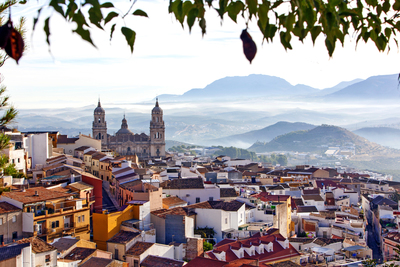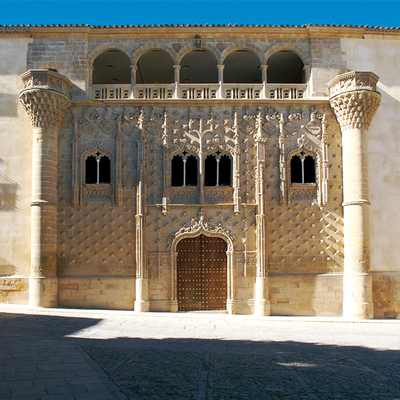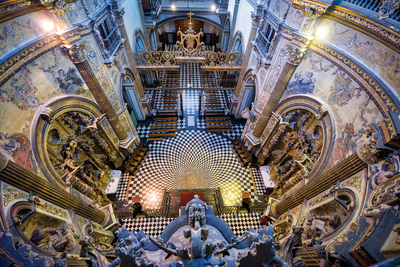Sierras de Cazorla, Segura & Las Villas route

Despite being a well-known natural area, this site and in particular this route never cease to amaze. This route skirts a small part of the gigantic mountain range in the Sierras de Cazorla, Segura y Las Villas Natural Park, the second largest protected area in Europe, on roads that seem to have been designed for motorbikes. From Cazorla, as soon as you reach the Palomas pass, you will enjoy a spectacular panorama of the enormous beauty that awaits you. Forests, ravines, rivers, streams and gullies endlessly follow one after the other. Coto Ríos or the Borosa are merely the river preamble to the great El Tranco reservoir. To venture into the natural park is to immerse yourself in the wild nature of the newly-born River Guadalquivir. The return trip through the Sierra de Las Villas will reveal unknown places, far from the hustle and bustle of the world, a long, solitary route, removed from mass tourism. Can you imagine going around thrilling bends, feeling the fresh wind of the mountains and smelling the intense scent of resin? It’s dreaming of an impossible journey that’s come true!
On route
You begin at the picturesque and bustling Cazorla, from the Plaza Vieja and with La Yedra castle at your back, silhouetted against the white mountain hamlet (stop 1). Soon, almost without leaving built-up areas, you reach La Iruela. Its castle, which some say is Templar in origin, seems to be perched on the mountain, just above you. The route then continues with impressive views of the countryside on the left carpeted with olive trees, passing through the village of Burunchel and beginning to ascend to the Las Palomas pass. The road is meandering, with heavy traffic and very smooth asphalt. You are advised to exercise caution.
At the top of the pass, at an altitude of 1,200 metres, you might stop at the vantage point and enjoy the impressive views of the interior of the Guadalquivir valley (stop 2). Huge vultures fly over your head, giving a foretaste of the richness of the natural space’s fauna. You will feel small in the immensity of these mountain ranges. You will descend to the bottom of the valley amidst huge mountains on either side, surrounded by lush and colourful vegetation. The Guadalquivir will be at your side, still young, little more than a stream. It is common to see deer, squirrels and wild boar, which cross a winding road that has a few speed bumps. You will have to slow down.
You will leave behind the timber-producing settlement of Vadillo Castril, the imposing Cerrada del Utrero and the populous tourist centre of Arroyo Frío before reaching the Torre del Vinagre, an interpretation centre for mountain fauna with an interesting botanical garden (stop 3). It is well worth stopping to visit it, recharge your batteries and, if it takes your fancy, walk along the nearby River Borosa path, an impressive itinerary on foot. You will now be riding parallel to the river until you reach the tails of the Tranco de Beas reservoir, the first reservoir to dam the waters of the Guadalquivir. On the right, in the foreground, is the Collado del Almendral Hunting Park; in the background, like something from a legendary chronicle, stands Bujaraiza Castle in the middle of the riverbed and anchored to the island of La Viña.
Beside the dam is the solar boat dock, with a highly-recommended route, and some bars and restaurants, a good place to sample the mountains’ culinary culture (stop 4). These include hearty, deep-rooted dishes such as gachamiga (a dish of sausage and breadcrumbs), andrajos (a rabbit stew) and ajoharina (a dish with potatoes and bell peppers), as well as pisto serrano (ratatouille with ham), a wide variety of sausages, including those made from bush meat, and venison and wild boar stews. But if there is one dish you must try, it is Segura lamb, either roasted or in stews, and trout prepared in various ways.
After the reservoir, you turn onto the A-6202 and follow the course of the Guadalquivir, leaving the Sierra de Segura to the east, an impregnable massif! The source of the River Segura, it is a place of tiny villages, herds of Segura sheep and immense forests of Salgar pine...The cradle of silence can wait for another time. You then continue downstream through an impressive gorge, a canyon that will make you feel very small. You then cross the river via the Charco de la Pringue and climb up to the Sierra de Las Villas, which is as unknown as it is magical (stop 5). You then begin a steep and difficult climb, zigzagging, the most rugged, solitary and unknown section of the entire natural park. The view from the Tapadero vantage point is impressive: it gives you the sensation of flying among cliffs (stop 6). You then follow the route very slowly, riding between 1,000 and 1,400 metres above sea level, amidst pines and cypresses. You then ride on a lonely, very narrow and uneven road, with potholes caused by pine tree route, with gravel and leaf litter in some sections. It is worth taking it easy, enjoying the silence and concentrating on your riding.
After many kilometres of solitude, the road goes down as far as the small Aguascebas reservoir (stop 7). Its deep blue waters transport you to what looks like an Alpine environment in the heart of Andalusia. The countryside is now in sight and the end point is getting nearer. Before the sierra becomes a memory, you will descend and approach the La Osera waterfall; the walk does not disappoint. You then continue downhill to the village of Chilluévar, which has spectacular views of Gilillo, the peak that crowns the village of Cazorla. On the A-6204, a wider and faster road, you will return to the city, the beginning and end point of this route.
#lasvillas selfie spot
Tapadero vantage point, with impressive views of the northern gorges of the Sierra de Las Villas. The vertical walls act as a refuge and nesting site for many birds, the most iconic of which are birds of prey. You can admire the flight of vultures including Egyptian vultures, which float on the hot air currents that rise from the floor of the valley.




























